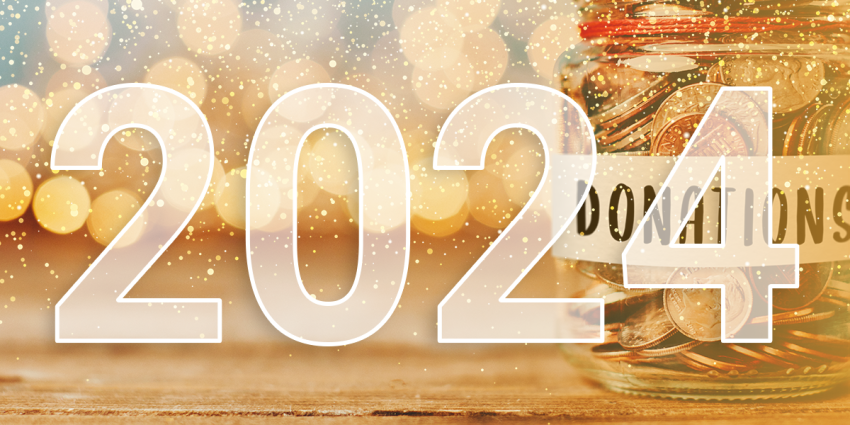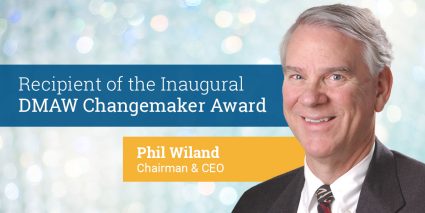What Nonprofit Fundraisers Must Know for Their 2024 Planning
From optimizing donor relationships to exploring new digital fundraising opportunities, our nonprofit industry experts weigh in on the things fundraisers must consider as they strategize for a successful 2024.

Fundraisers have some big questions on their minds as they plan their 2024 strategies:
- How will macroeconomic trends continue to affect donor confidence?
- How can we put our fundraising budget to the most effective use?
- How can we find and engage new high-value donors?
- How can we maximize our relationships with existing donors?
These perennial questions seem to have greater urgency with less room for error as we enter 2024. After a challenging 2023 that has represented a second consecutive year of downward trending fundraising results and an evolving economic, regulatory, and fiscal landscape, it’s crucial that nonprofits collaborate with their data partners to position themselves for a successful 2024.
We spoke with a panel of experts from the Wiland nonprofit team—Roger Hiyama (Executive Vice President, Solutions and Innovation), Angela Newsom (Vice President, Client Success), and Kaitlyn Anderson (Vice President, Client Success)—to get their perspectives on what fundraisers should expect in the months ahead. They discussed what fundraisers could be doing now to ensure that they are using all of the best data-driven tools at their disposal to achieve their goals in the coming year.

How would you describe the fundraising landscape this past year?
Roger: “This year was a challenging one for fundraisers. The 2023 economic climate has been mixed with some positives, including continued low unemployment rates, reduced inflation, and a strong stock market. However, interest rates are high, savings rates are down, and economic and political uncertainty seem to be impacting consumer confidence. Most nonprofits have also been working from flat or slightly reduced expense budgets again this year. Although supply chain issues have been normalized, the increased costs of paper, production, and postage have reduced nonprofit mail volume. Combine these lower volumes and reduced response rates and 2023 will likely be down—possibly by up to 10%—from 2022 to 2023.”
Angela: “Dynamic is the word that I would use to describe the 2023 fundraising landscape. Nonprofits have had to navigate many obstacles simultaneously, from rising postage and paper costs to uneven donor confidence. At the same time, many are also working through the challenge of attribution given the prominence of multichannel fundraising.”
Kaitlyn: “I would call it a rugged fundraising environment. Data privacy has been another challenge that nonprofits have had to navigate as they look to reach their best donors and prospects while staying in compliance with new and evolving data privacy laws.”
How do you anticipate these trends and challenges will carry over into 2024?
Angela: “I think that many of the top considerations for fundraisers in 2023 will continue next year as we wait for economic uncertainty to subside. Fundraisers will need to find new ways to engage with their donors, and multichannel campaigns will play an important role.”
Kaitlyn: “I’d go so far as to say that many of the trends of 2023 will be amplified in the new year. Data privacy, for example, will be an even greater focus as new state laws continue to come into effect. Fundraisers will also need to strike the right balance between testing new strategies to keep donors engaged with rising costs and budget constraints.”
Roger: “A growing concern for nearly all nonprofits is the shrinking size of their active donor files. Many nonprofits have struggled to reactivate enough lapsed donors and acquire enough new donors to offset the number of lost donors. Having fewer active donors will make hitting top-line revenue targets even more difficult in 2024. Reversing this trend will require a combination of two things: 1) improving marketing effectiveness by more efficiently targeting appeals to increase response rates and reduce marketing waste; and 2) increasing marketing budgets to offset the effects of inflation and allow for strategic investments to acquire new donors. All this said, nonprofits are very resilient and have a history of facing challenges head-on. I have confidence that they will find ways to do more with less.”
What do you think the biggest “hot topics” of conversation will be for nonprofits in 2024?
Roger: “Artificial intelligence (AI) will dominate much of the conversation across the industry because AI promises advances in creativity, productivity, and processing flow. There is a tremendous amount of interest in the role of AI as a tool to create more effective fundraising solutions and run more profitable campaigns. At Wiland, we’ve been using AI and other machine learning techniques for well over a decade to inform the creation of our industry-leading donor audiences and predictive data solutions, so we’re excited to discuss its ability to impact results with our clients.”
Kaitlyn: “In addition to AI, I think that nonprofits will be discussing how they can hyper-personalize their fundraising to maximize each campaign’s performance and how they can diversify their revenue.”
Angela: “As nonprofits look to grow and diversify their active donor bases, I expect that conversations about how to attract new, different, and younger donors will continue.”
At Wiland, we’ve been using AI and other machine learning techniques for well over a decade to inform the creation of our industry-leading donor audiences and predictive data solutions.
At Wiland, we’ve been using AI and other machine learning techniques for well over a decade to inform the creation of our industry-leading donor audiences and predictive data solutions.
How are you seeing nonprofits plan their 2024 fundraising strategies?
Kaitlyn: “I’m seeing a lot of creativity amongst clients. Anything that an organization can do to stand out, personalize their messages, and precisely target their campaigns to engage with the right audiences will go a long way in 2024.”
Angela: “I’m also seeing many clients using post-merge optimization to maximize the effectiveness of their campaigns. This helps ensure that only the most responsive segments of their donor files are receiving appeals.”
Roger: “Many nonprofits are also focusing more resources on monthly sustainer recruitment and reinstatement, as the lifetime value of these donors can be nine times that of a traditional donor. Focusing more efforts on mid-level and major donor cultivation as well as exploring multi-touch, multichannel fundraising opportunities—such as digital/direct mail co-targeting—are also trends we’re seeing.”
What are some ways that fundraisers are working with Wiland to prepare for 2024?
Angela: “Year-end is a great time to look back at the previous year and evaluate what worked and what didn’t. We’re having a lot of these conversations with clients and identifying opportunities to update existing audience and optimization models and build new ones when needed.”
Kaitlyn: “In addition to testing unique new donor audiences, many clients are turning to us as they look to invest in optimization strategies. Our Optimal Ask Amount Series solution—which helps nonprofits identify the ideal ask amount for each donor based on their total giving and spending behaviors—as well as our post-merge optimization solution have been of particular interest.”
Roger: “More and more of our customers are using our AI-enabled post-merge optimization processing to identify records that should be dropped from their mailings. Our CLEAR Advantage models use machine learning to very confidently predict which records are going to produce poor results if mailed. By scoring the net file, we can quickly identify “rock bottom” names that will barely produce revenue of $.04 or $.05 per piece if mailed. Being able identify and drop the 5-7% of guaranteed waste that exist out of every merge/purge, fundraisers can save the $.40-$.60 per piece on paper, production, and postage costs and move that savings to the next campaign. For a 250,000-name mailing, you could spend only $700 on optimization to drop 17,500 names. The resulting savings would be between $7,000 and $10,500. Over the course of a year, if you’re mailing three million pieces in acquisition, Wiland’s AI-enabled post merge optimization would yield a net savings of between $75,000 and $120,000!”
Nonprofits are very resilient and have a history of facing challenges head-on. I have confidence that they will find ways to do more with less.
Nonprofits are very resilient and have a history of facing challenges head-on. I have confidence that they will find ways to do more with less.
What advice would you give fundraisers as they look ahead to 2024?
Kaitlyn: “You can’t afford to wait to test the optimization strategies that we’ve discussed. Explore these solutions now to see how they can impact your fundraising throughout 2024.”
Angela: “Ensure that you’re continuously updating the data that you provide to your audience and data partners. The December and January timeframe is ideal for building new models based on this refreshed information so that they can be tested and ready to roll out during peak 2024 giving seasons.”
Roger: “Fundraisers should do a detailed review of their fundraising results to identify where their least effective marketing dollars are being wasted so they can re-direct those expenditures for better use. Fundraisers tend to know their campaign averages in terms of response rate, average gift, revenue per piece, cost per dollar raised, net per donor, etc. But in order to make the most of limited budgets, I urge fundraisers to also better understand where their worst marketing dollars are being spent.”
Any closing thoughts about how fundraisers can achieve success in 2024?
Angela: “Keep a close eye on your results and continue to share them with your data partners on a regular basis so they can help you achieve your goals.”
Roger: “The fastest growing solution for nonprofits in the past two years at Wiland has been our managed digital co-targeting campaigns—our omnichannel digital product where we use programmatic display advertising to reinforce fundraising messages using client-provided display ads. For house, lapsed, and/or prospect names, Wiland will serve anywhere from 10 to 30 display ad impressions to each person during the duration of a direct mail campaign, usually starting two weeks prior to a mail drop and lasting 30-60 days after the direct mail lands in home. It’s a very effective omnichannel technique that drives brand reinforcement and dramatically lifts website conversion rates and direct mail returns. Keep in mind that spending a few pennies more in digital costs on your best names might be a better investment than spending 50 cents on your next worst prospect.”
Kaitlyn: “Fundraisers are some of the most resourceful, creative, insightful, and tenacious people that I know. I’m confident that they will persevere in 2024, and I can’t wait to see what we can all accomplish together.”
Tags: digital fundraising direct mail fundraisers nonprofits optimization




